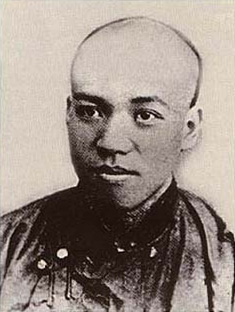Zhonghua minzu
Zhonghua Minzu (Lua error in package.lua at line 80: module 'strict' not found.
), often translated as "Chinese nation" or "Chinese ethnic groups," is a term that embodies a broad and inclusive concept referring to all the ethnic groups in China, including the Han Chinese—who make up the majority—and 55 other officially recognized ethnic minorities. This concept is significant in the context of China's national identity, emphasizing unity among its diverse ethnic groups within a single Chinese nation-state.
Concept and Origins[edit | edit source]
The term Zhonghua Minzu was first popularized in the early 20th century, during a period of national awakening and reform. It was a time when China was undergoing profound changes and facing external pressures from imperialist powers. Intellectuals and reformers like Sun Yat-sen advocated for the idea of a unified Chinese nation that would transcend ethnic and regional differences to resist foreign domination and modernize the country.
The concept of Zhonghua Minzu is rooted in the idea of a shared history, culture, and destiny among the people living within China's borders. It seeks to foster a sense of national cohesion and pride, while also acknowledging and respecting the cultural diversity of its various ethnic groups.
Ethnic Composition[edit | edit source]
China officially recognizes 56 ethnic groups, with the Han Chinese being the largest, comprising over 90% of the population. The other 55 ethnic minorities include groups such as the Zhuang, Manchu, Uighur, Hui, Tibetan, and Mongol peoples, each with their own distinct languages, cultures, and traditions. These groups are distributed across China, with some regions, like Xinjiang, Tibet, and Inner Mongolia, having higher concentrations of certain minorities.
Policies and Practices[edit | edit source]
The Chinese government has implemented various policies aimed at promoting equality among the different ethnic groups and preserving their cultural heritages. These include autonomous administrative regions, affirmative action programs in education, and protection of minority languages and cultures. However, there have been tensions and conflicts, particularly in regions like Xinjiang and Tibet, where policies have sometimes been viewed as suppressive or assimilationist by minority groups.
Contemporary Significance[edit | edit source]
In contemporary China, the concept of Zhonghua Minzu continues to play a crucial role in state ideology and policy. It is invoked to promote national unity, patriotism, and loyalty to the state. The government emphasizes the harmony and solidarity among the ethnic groups as part of its broader narrative of national rejuvenation and development.
However, the application and interpretation of Zhonghua Minzu are not without controversy. Issues related to ethnic identity, autonomy, and rights remain sensitive and complex, reflecting the challenges of managing ethnic diversity within a rapidly modernizing and increasingly globalized nation.
See Also[edit | edit source]
Search WikiMD
Ad.Tired of being Overweight? Try W8MD's NYC physician weight loss.
Semaglutide (Ozempic / Wegovy and Tirzepatide (Mounjaro / Zepbound) available. Call 718 946 5500.
Advertise on WikiMD
|
WikiMD's Wellness Encyclopedia |
| Let Food Be Thy Medicine Medicine Thy Food - Hippocrates |
Translate this page: - East Asian
中文,
日本,
한국어,
South Asian
हिन्दी,
தமிழ்,
తెలుగు,
Urdu,
ಕನ್ನಡ,
Southeast Asian
Indonesian,
Vietnamese,
Thai,
မြန်မာဘာသာ,
বাংলা
European
español,
Deutsch,
français,
Greek,
português do Brasil,
polski,
română,
русский,
Nederlands,
norsk,
svenska,
suomi,
Italian
Middle Eastern & African
عربى,
Turkish,
Persian,
Hebrew,
Afrikaans,
isiZulu,
Kiswahili,
Other
Bulgarian,
Hungarian,
Czech,
Swedish,
മലയാളം,
मराठी,
ਪੰਜਾਬੀ,
ગુજરાતી,
Portuguese,
Ukrainian
Medical Disclaimer: WikiMD is not a substitute for professional medical advice. The information on WikiMD is provided as an information resource only, may be incorrect, outdated or misleading, and is not to be used or relied on for any diagnostic or treatment purposes. Please consult your health care provider before making any healthcare decisions or for guidance about a specific medical condition. WikiMD expressly disclaims responsibility, and shall have no liability, for any damages, loss, injury, or liability whatsoever suffered as a result of your reliance on the information contained in this site. By visiting this site you agree to the foregoing terms and conditions, which may from time to time be changed or supplemented by WikiMD. If you do not agree to the foregoing terms and conditions, you should not enter or use this site. See full disclaimer.
Credits:Most images are courtesy of Wikimedia commons, and templates, categories Wikipedia, licensed under CC BY SA or similar.
Contributors: Prab R. Tumpati, MD



